Long-Lasting Solution: Steel Panel Dent Repair Techniques
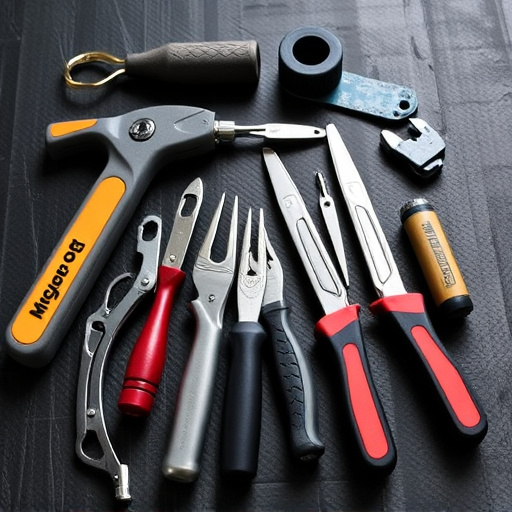
Steel panel dent repair is a specialized technique that restores car bodies to their original shape…….
In today’s fast-paced world, the structural integrity of buildings and infrastructure is paramount, especially when it comes to durable and reliable materials like steel. Steel panel dent repair is a specialized field that focuses on restoring and reinforcing damaged or deformed steel panels, ensuring structural stability and longevity. This article aims to provide an in-depth exploration of this crucial process, covering its historical roots, global impact, technological innovations, regulatory landscape, and future prospects. By delving into these aspects, we will equip readers with a comprehensive understanding of the significance and potential of steel panel dent repair.
Steel panel dent repair is a specialized technique employed to correct deformities or damages in steel panels used in construction and industrial applications. These panels, typically made from high-strength steel alloys, are susceptible to dents, creases, or warping due to various factors such as impact, heavy loads, or manufacturing defects. The process involves the careful assessment, repair, and reinforcement of these damaged areas to restore the panel’s structural integrity and aesthetic appeal.
The core components of a steel panel dent repair system include:
Inspection and Assessment: This initial step involves meticulous inspection using specialized tools to identify the extent of damage, its location, and the underlying causes.
Reparation: Techniques such as welding, riveting, or the use of specialized adhesives are employed to fix the damaged area, ensuring a strong and permanent repair.
Reinforcement: To enhance structural stability, additional materials like steel plates, mesh, or composite reinforcement bars might be incorporated into the repaired panel.
Coating (Optional): Post-repair, applying protective coatings can prevent further corrosion and improve the panel’s longevity.
The practice of steel panel dent repair has evolved significantly over the years, driven by advancements in materials science and construction techniques. Historically, damaged metal structures were often replaced entirely, which was costly and time-consuming. However, with the introduction of modern repair techniques in the mid-20th century, the concept of repairing and reinforcing instead of replacing gained traction.
The 1970s saw the development of advanced welding technologies, enabling more precise and durable repairs. This period also witnessed the emergence of specialized tools and equipment designed specifically for dent repair, revolutionizing the field’s efficiency. Over time, research has focused on creating lightweight yet high-strength steel alloys, further enhancing the capabilities of dent repair methods.
Steel panel dent repair is a global phenomenon, with applications spanning various industries and climates. The international influence can be attributed to several factors:
Construction Boom: Rapid urbanization and infrastructure development in countries like China, India, and Brazil have led to an increased demand for durable steel structures.
Manufacturing Industries: Steel panel repairs are essential in maintaining the integrity of industrial facilities, including automotive plants, warehouses, and manufacturing units.
Offshore Structures: The offshore oil and gas industry heavily relies on steel panels for platform construction, making dent repair critical for safety and operational efficiency.
The adoption and specific trends in steel panel dent repair vary across regions:
| Region | Key Trends |
|---|---|
| North America | Focus on lightweight steel alloys and advanced welding techniques. Increased use of automated repair systems. |
| Europe | Stricter building codes leading to more precise and compliant repairs. Adoption of digital technologies for inspection and documentation. |
| Asia-Pacific | Rapid construction growth with a need for cost-effective, quick-turnaround repair solutions. Growing preference for environmental-friendly coatings. |
| Middle East | High demand for corrosion-resistant steel panels due to harsh climates. Integration of smart technology for predictive maintenance. |
The global steel panel dent repair market is a dynamic sector, influenced by fluctuations in the construction and manufacturing industries. Key factors driving market growth include:
Infrastructure Development: Governments worldwide are investing heavily in infrastructure projects, increasing the demand for steel panel repairs.
Offshore Expansion: The growing exploration of offshore energy resources boosts the need for durable and repairable steel structures.
Environmental Regulations: Stricter environmental standards encourage the use of eco-friendly materials and processes.
Investors in this space are primarily focused on:
Technological Upgrades: Funding research and development to enhance repair techniques, materials, and equipment.
Infrastructure Projects: Investing in large-scale construction initiatives, ensuring the long-term demand for dent repair services.
Specialized Services: Companies specializing in complex or specialized steel structures are attractive targets due to their niche expertise.
Technological advancements have played a pivotal role in revolutionizing steel panel dent repair:
Computer-Aided Design (CAD) and Modeling: These tools enable precise digital representations of damaged panels, aiding in repair planning and simulation.
Laser Technology: High-precision lasers are used for accurate cutting, welding, and marking during the repair process.
Robotic Systems: Automation has improved efficiency, especially in large-scale repairs, with robotic arms capable of precise movements.
Advanced Adhesives: Newer adhesives offer stronger bonds, faster curing times, and enhanced corrosion resistance.
Technological innovations have led to:
Increased Efficiency: Reduced repair time, labor costs, and material waste.
Enhanced Precision: Better control over the repair process, resulting in higher quality outcomes.
Improved Safety: Automation reduces the risk of human error and exposure to hazardous materials.
The future holds immense potential for technological growth:
Additive Manufacturing (3D Printing): This could enable on-site repairs, reducing transport costs and increasing accessibility in remote areas.
Artificial Intelligence (AI) Integration: AI algorithms can analyze repair data to predict failure points, optimize maintenance schedules, and enhance overall structural health monitoring.
Internet of Things (IoT) Devices: IoT sensors can provide real-time feedback on panel conditions, enabling proactive maintenance.
The regulatory landscape surrounding steel panel dent repair is complex and varies across jurisdictions:
Building Codes and Standards: Many countries have stringent building codes dictating structural integrity requirements, including steel panel repairs. Examples include the International Building Code (IBC) in North America and the British Standard BS 6100 in the UK.
Occupational Safety and Health Administration (OSHA) Regulations: In the US, OSHA sets standards for workplace safety, influencing repair practices to ensure worker protection during repairs.
Environmental Policies: Regulations like the European Union’s REACH (Registration, Evaluation, Authorization, and Restriction of Chemicals) aim to minimize environmental impact, guiding the selection of materials and processes.
Regulatory bodies play a crucial role in:
Standardization: Establishing consistent repair methods and quality standards across industries.
Safety Assurance: Ensuring worker safety and minimizing risks associated with repairs.
Sustainability: Promoting eco-friendly practices, material recycling, and the use of sustainable resources.
Despite its advancements, steel panel dent repair faces several challenges:
Complex Geometries: Repairs for panels with intricate shapes or curved surfaces can be challenging, requiring specialized techniques and tools.
Corrosion Concerns: Treating existing corrosion before repairing can be difficult, especially in harsh environments.
Material Availability: The availability of high-quality steel alloys and repair materials may vary globally, affecting project timelines and costs.
Criticisms and potential strategies to address them include:
Costly Repairs: While repairs are cost-effective in many cases, complex or large-scale projects can be expensive. To counter this, industry professionals should focus on preventing damage through better design and maintenance practices.
Skill Shortages: There is a global shortage of skilled labor for dent repair. Addressing this requires targeted training programs and the establishment of certification standards to ensure quality work.
Environmental Impact: Traditional repair methods often involve hazardous materials. The industry should embrace eco-friendly alternatives, such as biodegradable adhesives and protective coatings.
Location: New York City, USA
Challenge: A historic suspension bridge required extensive steel panel repairs due to years of exposure to harsh weather conditions and heavy traffic loads. The challenge was to restore the structural integrity while preserving the bridge’s aesthetic appeal as a cultural landmark.
Solution: Engineers employed advanced laser welding techniques for precise repairs, ensuring minimal disruption to the bridge’s operation. Specially formulated corrosion-resistant coatings were applied post-repair to extend the structure’s lifespan.
Outcome: The restored bridge reopened to much acclaim, showcasing enhanced structural stability and a visually stunning transformation.
Setting: North Sea, Europe
Problem: An offshore oil platform needed repairs to its steel panels after years of operation in harsh marine environments. The challenge was to minimize downtime while ensuring worker safety and environmental protection.
Approach: Robotic welding systems were deployed for efficient, high-quality repairs. Pre-fabricated replacement panels with enhanced corrosion resistance were installed, reducing the overall repair time.
Result: The platform resumed operations faster than expected, demonstrating improved safety standards and reduced environmental impact.
The future of steel panel dent repair is promising, with several growth areas identified:
Renewable Energy Infrastructure: As the transition to renewable energy sources accelerates, there will be an increased demand for repairs in solar farm structures, wind turbines, and related components.
Smart Cities Development: Urban planning initiatives focusing on smart cities require durable and repairable steel structures, creating opportunities for advanced dent repair technologies.
Offshore Renewable Energy: The growing focus on offshore wind and marine energy projects will drive the need for specialized repair services in extreme environments.
Trends shaping the industry include:
Digital Twin Technology: Creating digital replicas of physical structures to monitor their condition, predict failures, and optimize repairs.
Augmented Reality (AR) Applications: AR can assist technicians during repairs by providing real-time visual guides and instructions.
Data Analytics Integration: Analyzing repair data can identify patterns, leading to improved design and maintenance strategies.
Steel panel dent repair is a critical process that ensures the structural integrity and longevity of steel structures worldwide. From its historical roots to today’s advanced technologies, this field has evolved significantly, addressing global challenges in construction, manufacturing, and offshore industries. As the world continues to evolve, so too will the demands placed on steel panel repairs, requiring ongoing innovation, regulatory adaptation, and skilled labor development.
Q: How do I know if a steel panel needs repair?
A: Signs of damage include visible dents, deformations, cracks, or rust spots. Regular inspections and maintenance can help identify potential issues early on.
Q: Are there any eco-friendly options for steel panel repairs?
A: Absolutely! There are various environmentally friendly materials and techniques available, such as biodegradable adhesives, natural fiber composites, and water-based protective coatings.
Q: Can robotic systems replace human repair technicians?
A: While automation can significantly enhance efficiency, human expertise remains invaluable. Robotic systems assist in complex repairs, but skilled technicians are still required for precise, high-quality work.
Q: What is the typical lifespan of a repaired steel panel?
A: With modern repair techniques and proper maintenance, a repaired steel panel can last for several decades, often surpassing the original structure’s lifespan.
Q: How do building codes impact dent repair practices?
A: Building codes dictate minimum structural requirements, including repair methods and material specifications. Compliance ensures that structures meet safety standards while maintaining their integrity.

Steel panel dent repair is a specialized technique that restores car bodies to their original shape…….

Steel panel dent repair is a meticulous process involving assessment, pressing, sanding, and priming…….

Professionals in steel panel dent repair employ a range of tools from hydraulic presses and hand too…….
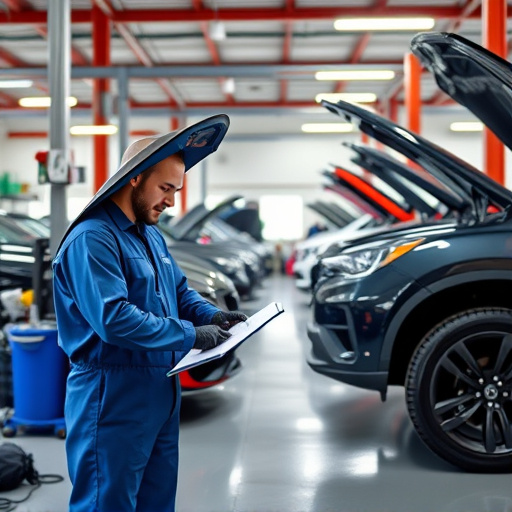
Steel panel dent repair offers a convenient, efficient solution for car owners with busy schedules,…….
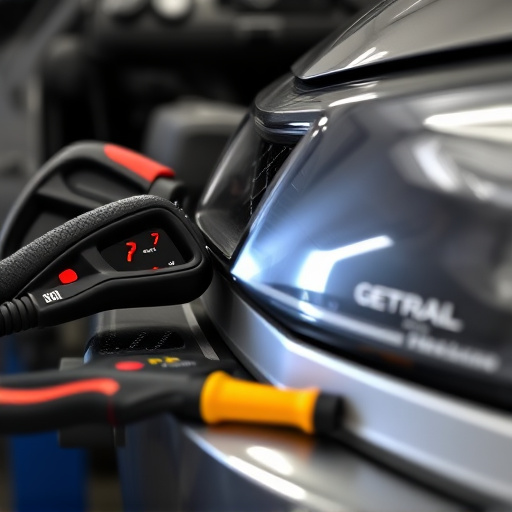
Steel panel dent repair requires skill and precision to maintain factory finish. Assessment, extract…….
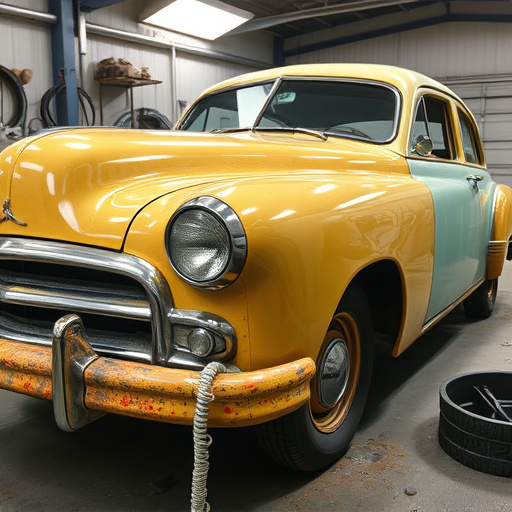
Modern steel panel construction in automotive manufacturing offers strength, durability, and lightwe…….

Steel panel dent repair is a specialized skill crucial for maintaining structural integrity in cars…….
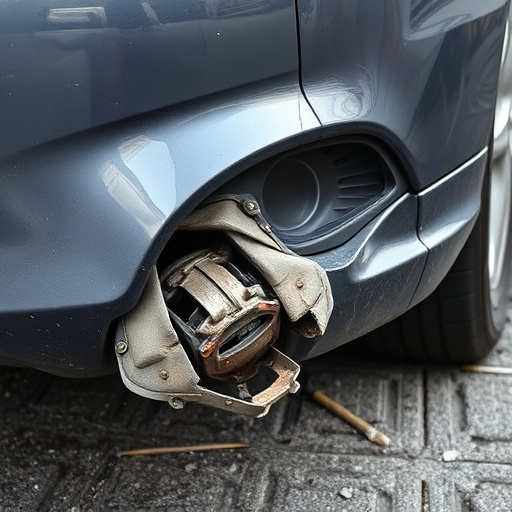
Professionals in steel panel dent repair use specialized tools ranging from pneumatic hammers for pr…….
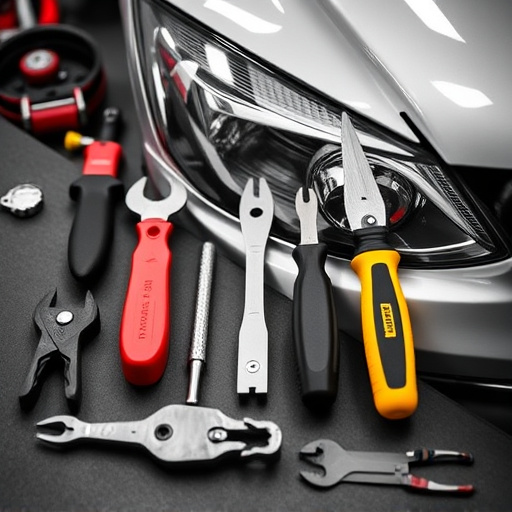
Modern steel panel dent repair techniques, driven by advancements like robotic welding and CAD, offe…….

Efficient steel panel dent repair requires understanding material variations and complex geometries,…….